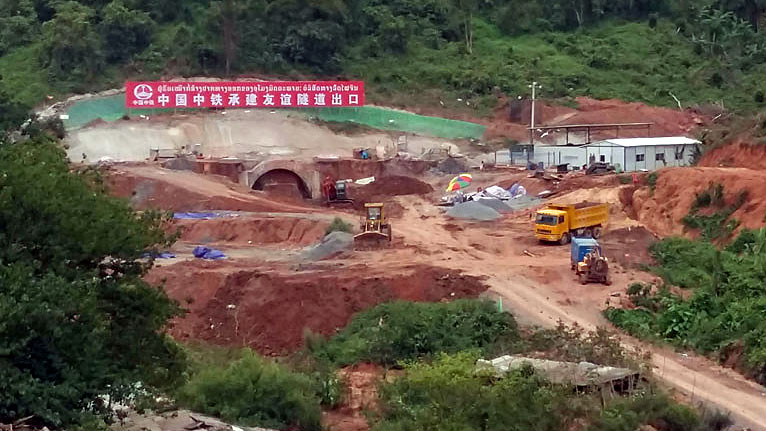
A construction crew builds a tunnel for the Lao-Chinese high-speed railway in northern Laos' Luang Namtha province, July 12, 2017. (RFA)
An introduction to China’s massive foreign policy initiative
What is Belt and Road?
A multipronged foreign policy effort launched by Chinese President Xi Jinping in 2013 to finance and build roads, bridges, railways, ports and other infrastructure projects in Africa, Asia, the Mideast and Europe to open trade routes that benefit China.
What are the aims?
They are not solely economic. The Chinese say they include building political trust and cultural exchanges, and promoting "peace and friendship" among the nearly 70 participating countries.
What's the cost?
An oft-cited number is $1 trillion in loans and investments from China, by some estimates go as high as $8 trillion over time. Skeptics say China might not be able not be able to afford it all.
What kind of projects?
Ports, roads, railways, airports, coal, solar and biofuel power plants, pipelines, refineries, dams and more. China claims $900 billion worth are in the works, including rail networks in East and Central Africa, from China through Southeast Asia, and from China through Eurasia to Europe.
Who's benefiting?
Critics say Chinese state-owned companies are getting most of the jobs, but China says benefits are broader. A 2018 report by Deloitte consulting says investors drawn to the 50-plus industrial parks built under Belt and Road are "boosting jobs, tax revenues and the local economic base."
What about Africa?
China's investments in Africa predates Belt and Road by more than a decade. A report last year by McKinsey&Company said up to 10,000 Chinese firms have created jobs for "several million" Africans, some trained to run Chinese-built railways. China is Africa's No. 1 trade partner.
Can countries afford it?
There are some worries. Chinese-backed loans fund many projects. Some are low-cost; others have commercial rates. The Center for Global Development projected that some countries are at risk of taking on too much China debt. Unable to pay back an $8 billion construction loan, Sri Lanka gave China a 99-year lease to control strategic Hambantota port.
Is 'Belt and Road' green?
China put out principles for a 'green' Belt and Road. Although it's a leader in solar, wind and biofuel at home, one count says China is involved with 200-plus coal-fired power plants globally. Environmental groups are watching to see if Chinese banks follow green credit guidelines for projects like Kenya's $2 billion coal plant at the coastal town of Lamu, a World Heritage Site.